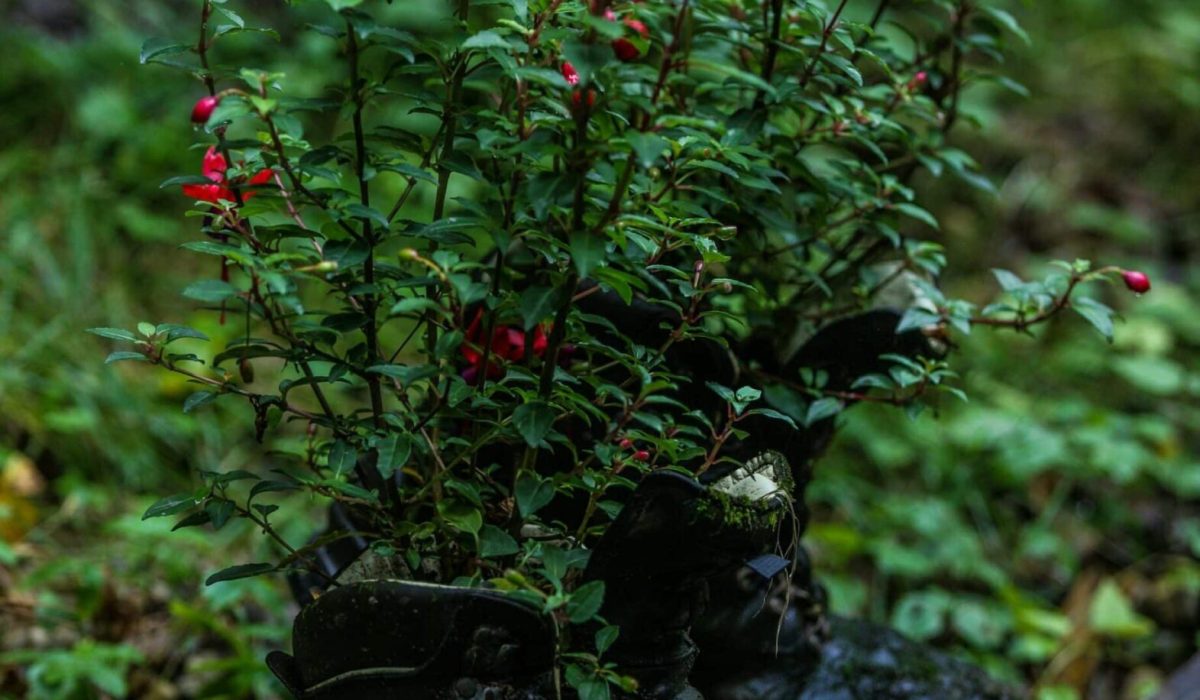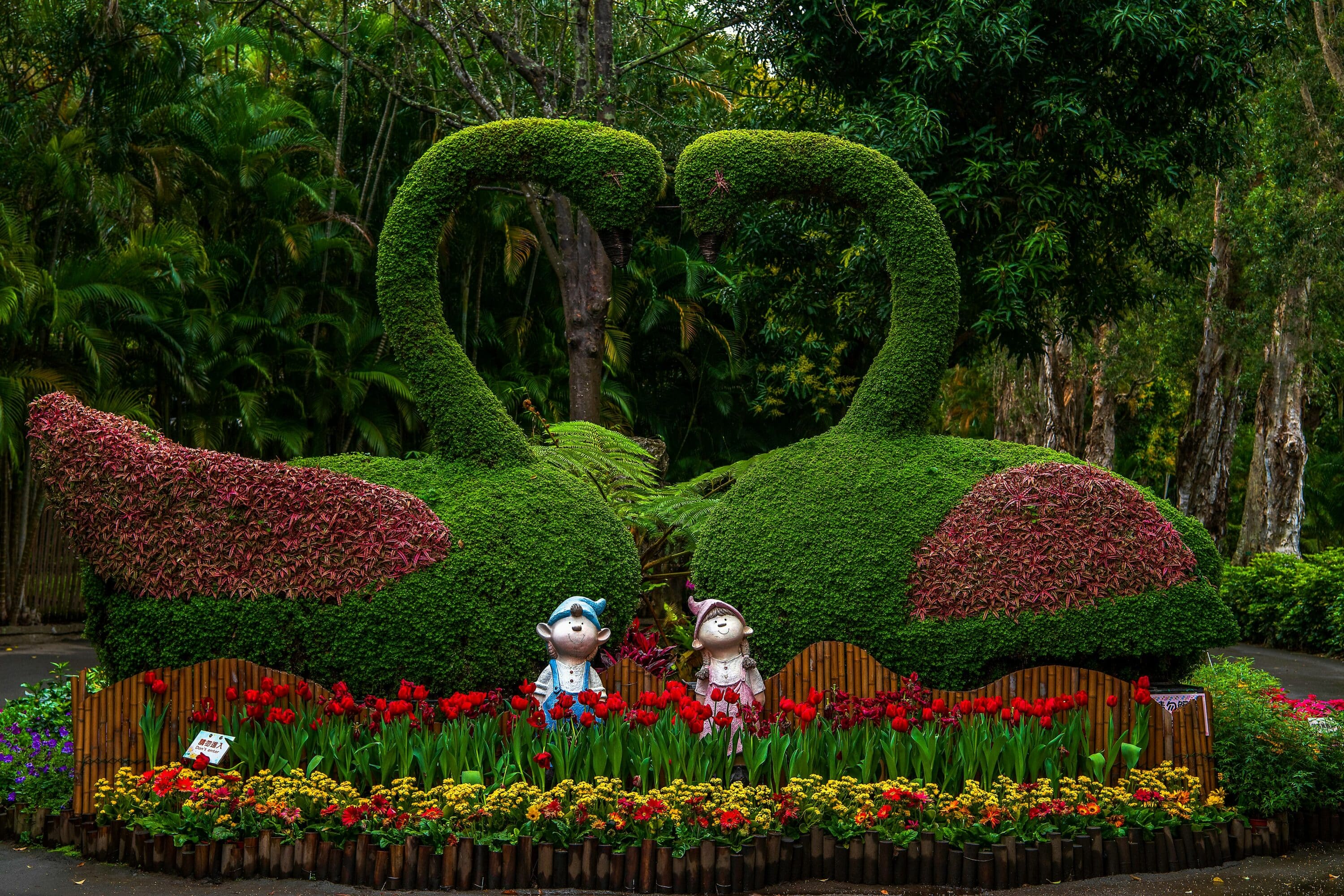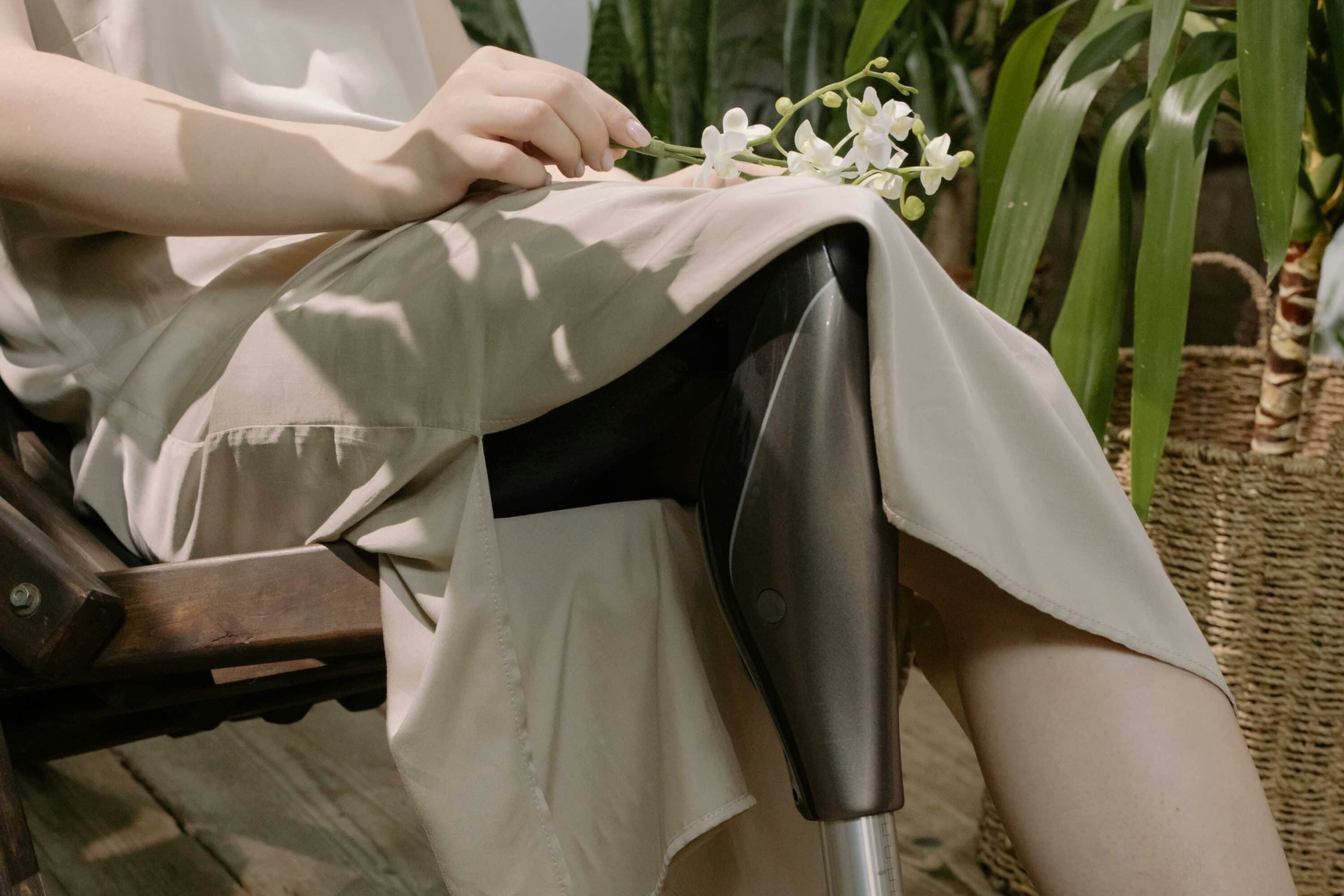Cultivating Serenity: Pallet Garden Ideas for Retirees

Are you searching for a gratifying and affordable way to beautify your outdoor space as you embrace the golden years? Look no further than pallet gardens – a charming and eco-friendly approach to gardening that is gaining popularity among retirees. Not only are they simple to create, but they also offer a canvas of possibility for those desiring to indulge in horticulture without the strain of traditional gardening. In this article, we’ll explore a variety of pallet garden ideas that promise to inject life into your patio, balcony, or backyard, while also providing a peaceful retreat where you can enjoy the fruits of your labour and the beauty of nature. Whether you’re an experienced gardener or just starting out, these ideas will help you to create a serene space that is both satisfying and easily manageable. Let’s delve into the world of pallet gardening and inspire you to start your very own project.
CONTENT
Why Pallet Gardens are Perfect for Retirees
Pallet gardens are the perfect solution for retirees looking to enjoy gardening without the physical strain of traditional methods. These gardens are raised, allowing for easy access and reducing the need to bend or kneel – a welcome relief for older garden enthusiasts. Moreover, pallets can be positioned at a comfortable height for planting, tending, and harvesting, making it an ideal option for retirees with limited mobility.
Another advantage of pallet gardens is their adaptability to limited spaces, making them suitable for retirees living in retirement communities or smaller homes. Whether on a patio, balcony, or in a small backyard, pallet gardens optimise the use of space, allowing retirees to continue their love for gardening in a manageable and convenient manner. Additionally, the elevated nature of pallet gardens means less bending and stooping, providing a more enjoyable gardening experience for those with back or joint issues.
Furthermore, pallet gardens offer a sustainable and cost-effective solution for retirees. With pallets being relatively inexpensive and readily available, gardening in pallets can be an affordable hobby for retirees looking to optimise their retirement budget. By utilising recycled materials, retirees can contribute to a greener environment and enjoy the satisfaction of creating something beautiful from repurposed items. These reasons, along with the opportunity to stay active and engaged, make pallet gardens a delightful pastime for retirees.

Choosing the Right Pallets for Your Garden
Selecting the right pallets is crucial for the success of your pallet garden. When choosing pallets, opt for ones that are heat-treated (HT) rather than those treated with chemicals. HT pallets are safe for growing edible plants and flowers, as they have been treated at high temperatures to reduce the presence of pests and pathogens. Look for the HT stamp on the pallet, which indicates that it has been heat-treated and is safe for gardening use.
Another factor to consider when choosing pallets is the condition of the wood. Avoid pallets that show signs of decay, damage, or chemical spills. These imperfections can affect the health and growth of your plants. Instead, look for pallets with solid, intact wood, free from rot or contamination. Additionally, smooth and clean pallets are easier to work with, simplifying the process of preparing them for planting and ensuring a more attractive final result for your garden.
It’s also important to assess the size and design of the pallets. Consider the space where you intend to place the pallet garden and choose pallets that fit the area appropriately. Some pallets are larger and better suited for bigger gardens, while smaller pallets are ideal for compact spaces. Furthermore, the design of the pallet, whether it’s a standard platform style or a smaller “half pallet,” will impact the layout and look of your garden. Carefully consider these factors to choose the right pallets that will meet the specific needs of your gardening space.
Preparing Pallets for Planting Success
Preparing pallets for planting is a crucial step in ensuring the success of your pallet garden. Start by cleaning the pallet thoroughly to remove any dirt, debris, or chemical residues. Use a stiff brush and water to scrub the surfaces, paying particular attention to the areas where the plants will be positioned. This cleaning process will create a healthy environment for your plants and prevent any unwanted substances from affecting their growth.
Next, consider applying a protective coating to the pallet wood to prolong its lifespan and safeguard it against the elements. For a natural approach, consider using linseed oil, which is a non-toxic and environmentally friendly option that provides excellent protection for the wood. Alternatively, you can use wood sealers or outdoor wood paint to shield the pallet from moisture and decay. Take your time to ensure that the protective coating is thoroughly applied and allowed to dry before proceeding to the next step.
After cleaning and protecting the pallets, it’s time to address the issue of drainage. Pallets need adequate drainage to prevent waterlogging, and this can be achieved by adding a landscape fabric or other porous material to the base of the pallet. Cut the fabric or material to fit the insides of the pallet compartments and secure it in place. This step will allow excess water to drain out, preventing waterlogging and root rot, and is essential for maintaining the health of your plants in the pallet garden.

Designing Your Pallet Garden Layout
Designing the layout of your pallet garden is an exciting opportunity to showcase your creativity while maximizing the use of space. Start by considering the orientation of the pallet – vertical or horizontal – and how it will fit into your outdoor area. Vertical pallet gardens are excellent for smaller spaces and can be placed against a wall or fence, while horizontal pallet gardens can be arranged on the ground or elevated on supports. Visualise the placement of the pallets in your garden space and consider the aesthetics and practicality of each option.
Once you have determined the orientation, plan the arrangement of the plants within the pallet compartments. Consider the size and growth habits of the plants to ensure they have sufficient space to flourish. Taller plants and climbers can be placed at the back of the pallet, while shorter or trailing plants can be positioned towards the front. This layered approach creates a visually appealing and harmonious display within the limited space of the pallet, while also ensuring that each plant receives the necessary light and space to thrive.
In addition to the plants, consider incorporating decorative elements into your pallet garden layout. Add visual interest by including small ornaments, signs, or hanging baskets to enhance the charm of the garden. You can also explore creative options such as painting the pallets, adding fairy lights, or incorporating trellises to make your garden a delightful and personalised oasis. The layout of your pallet garden is an opportunity to infuse your personality and style into the space, making it a reflection of your unique gardening vision.
Selecting Plants for Your Pallet Garden
When selecting plants for your pallet garden, it’s important to consider the specific conditions of your garden space, such as sunlight exposure, climate, and the size of the pallet compartments. Opt for plants that are well-suited to the amount of sunlight your garden receives. Shade-loving plants, such as ferns and hostas, are ideal for pallet gardens placed in shaded areas, while sun-loving plants like herbs, succulents, and flowering annuals thrive in full sun. By matching the plants to the light conditions, you can ensure their healthy growth and vitality.
The size of the pallet compartments will also dictate the types of plants you can incorporate into your pallet garden. Choose plants that are proportionate to the space available, considering both the height and spread of the plants. Compact and dwarf varieties are excellent choices for pallet gardens, as they can thrive within the confined space of the pallet compartments while still adding visual appeal and greenery to the garden. Additionally, consider the growth habit of the plants and how they will interact with each other within the limited space, ensuring a harmonious and balanced layout.
Furthermore, consider the practical aspects of plant selection, such as the maintenance requirements and water needs of the plants. Opt for low-maintenance plants that do not require excessive care, making it easier for retirees to tend to their garden without feeling overwhelmed. Drought-tolerant plants can also be advantageous, as they require less frequent watering, reducing the need for constant maintenance. By selecting plants that are suited to the specific conditions of your pallet garden, you can create a thriving and manageable garden space that brings joy and tranquility to your retirement days.

The Art of Planting in Pallets
When it comes to planting in pallets, there are a few key techniques to ensure success and longevity for your plants. Start by adding a layer of landscape fabric or geotextile to the bottom and sides of each compartment in the pallet. This fabric will help to hold the soil in place while allowing excess water to drain out, preventing waterlogging and maintaining a healthy environment for the roots of the plants. Secure the fabric in place using staples or nails, ensuring that it sits snugly within the compartments.
Next, use a high-quality potting mix to fill the pallet compartments. Choose a mix that is well-draining and rich in nutrients to provide an optimal growing medium for your plants. Fill each compartment with the potting mix, ensuring that it is evenly distributed and leveled. Consider adding slow-release fertiliser to the mix to provide essential nutrients to the plants over an extended period, reducing the need for frequent fertilising and allowing for a consistent supply of nutrients as the plants grow.
When it comes to planting the actual greenery, start by identifying the best placement for each plant within the pallet compartments. If planting multiple plants in the same compartment, consider the spacing and arrangement to allow each plant to thrive without crowding or competition. Gently remove the plants from their containers and position them within the potting mix, ensuring that the roots are well-covered and supported. Once the plants are in place, water them thoroughly to settle the soil and provide vital hydration to the roots. By following these planting techniques, you can establish a healthy and vibrant garden within the pallet, creating a beautiful and sustainable oasis for your retirement enjoyment.
Watering and Maintaining Your Pallet Garden
Watering and maintaining your pallet garden is essential to ensure the health and vitality of your plants. When it comes to watering, it’s important to monitor the moisture levels within the pallet compartments regularly. The confined space of pallet gardens means that they may dry out more quickly than traditional gardens, especially during warmer weather. Check the moisture level of the potting mix by inserting your finger into the soil – if it feels dry to the touch, it’s time to water. Be mindful not to overwater, as this can lead to waterlogging and root rot. Instead, aim for consistent, moderate watering to keep the soil evenly moist.
In addition to regular watering, it’s important to maintain the overall health of your pallet garden by monitoring for signs of pests and disease. Inspect the plants and the pallet structure regularly, looking for any indications of pest damage, wilting, or yellowing leaves. Address any issues promptly, as early intervention can prevent the spread of pests and diseases. Consider using natural pest control methods, such as neem oil or insecticidal soap, to protect your plants without resorting to harsh chemicals.
Furthermore, regular maintenance tasks such as deadheading, pruning, and fertilising are important for the ongoing care of your pallet garden. Remove spent flowers and dead foliage to encourage continuous blooming and minimise disease risk. Trim back any overgrown or unruly plants to maintain the shape and aesthetics of the garden. Additionally, consider fertilising the plants with a balanced, water-soluble fertiliser at appropriate intervals to provide them with essential nutrients for healthy growth. By dedicating time to the watering and maintenance of your pallet garden, you can create a thriving and beautiful outdoor space that brings joy and satisfaction to your retirement leisure.

Vertical vs Horizontal Pallet Gardens
The decision to opt for a vertical or horizontal pallet garden depends on the available space, aesthetic preferences, and the types of plants you wish to grow. Vertical pallet gardens are an excellent choice for small outdoor spaces, such as balconies or narrow patios. They maximise the use of vertical space, allowing you to create a lush garden without encroaching on valuable floor space. Vertical gardens also offer a striking visual impact, bringing a touch of greenery and natural charm to otherwise bare walls or fences.
On the other hand, horizontal pallet gardens are well-suited for ground-level spaces, larger outdoor areas, or situations where the physical arrangement of horizontal pallets complements the existing landscape. Horizontal gardens provide a wider surface for planting, allowing for a greater variety and number of plants within the pallet compartments. They are also more accessible for maintenance and planting activities, as they don’t require the use of ladders or elevated platforms. Additionally, the horizontal layout allows for a traditional garden bed feel while still offering the space-saving benefits of pallet gardening.
Consider the plant selection and growing habits when choosing between vertical and horizontal pallet gardens. Vertical gardens are ideal for climbers, hanging plants, and trailing foliage, as their upright structure provides natural support and an opportunity for plants to cascade and flourish. Horizontal gardens, on the other hand, are suitable for a mix of taller plants, ground cover, and compact herbs, creating a varied and visually appealing arrangement that complements the broader surface area. By carefully evaluating the available space and plant choices, you can make an informed decision on whether a vertical or horizontal pallet garden is the best fit for your gardening needs.
Decorating Your Pallet Garden
Decorating your pallet garden is a delightful way to add character and personality to your outdoor space, turning it into a serene retreat that reflects your unique style. One charming option for adding visual appeal to your pallet garden is by incorporating colourful and diverse planters. Select a variety of planters in different shapes, sizes, and colours to create an eye-catching display. You can place these planters within the pallet compartments, on the ground around the pallet, or even hang them from the pallet structure to introduce an element of whimsy and vibrancy to your garden.
Another creative decorating idea for your pallet garden is the use of decorative ornaments and accessories. Consider adding decorative items such as wind chimes, solar-powered lights, or small garden sculptures to infuse character and charm into the garden space. These ornaments can be strategically placed within the pallet compartments or hung from the pallet structure to create an enchanting and tranquil atmosphere. Additionally, consider incorporating repurposed items, such as vintage containers or upcycled decor, to add a touch of nostalgia and personality to your garden.
Furthermore, you can enhance the visual appeal of your pallet garden by introducing vertical elements such as trellises, hanging baskets, or climbing structures. Vertical additions can provide support for climbing plants, create visual interest, and maximise the use of space within the garden. By incorporating these vertical elements, you can create a multi-dimensional and enchanting garden space that brings joy and tranquillity to your retirement oasis.

Pallet Garden Ideas for Small Spaces
Pallet gardens are an excellent choice for retirees living in smaller spaces, including apartments, retirement communities, or compact homes. One creative idea for pallet gardens in small spaces is to utilise hanging pallet gardens. By suspending pallets vertically from walls, balconies, or fences, you can maximise the use of vertical space while leaving the ground area free. This not only adds a green touch to your surroundings but also allows for a flourishing garden even with limited square footage.
Another pallet garden idea for small spaces is the use of tiered or modular pallet arrangements. Instead of using a single pallet, consider stacking pallets or arranging them in a tiered formation, creating a multi-level garden. This approach maximises the use of space while providing a visually appealing and dynamic garden display. Additionally, the tiered arrangement allows for the cultivation of varied plant species, with different levels offering diverse growing conditions for a range of plants.
For small outdoor areas, consider creating a mobile pallet garden that can be easily repositioned to optimise sunlight and space usage. By adding wheels or casters to the base of the pallet, you can create a movable garden that can be easily shifted to accommodate changing light conditions or seasonal needs. This mobility ensures that your garden remains adaptable and practical, even in a confined outdoor setting, allowing for continuous gardening enjoyment regardless of the available space.
Tips for Pallet Garden Upkeep
Maintaining a pallet garden, once established, requires regular upkeep to ensure a thriving and visually appealing garden space. One essential tip for pallet garden upkeep is to monitor and adjust the watering schedule according to the specific needs of the plants and the prevailing weather conditions. In warmer, drier weather, plants may require more frequent watering, while in cooler periods, watering intervals may be less frequent. Additionally, consider investing in a soaker hose or drip irrigation system to facilitate consistent and efficient watering, particularly for larger pallet gardens. These systems can help to conserve water, minimise runoff, and provide targeted hydration to the plant roots, promoting overall garden health.
Regular pruning and deadheading are important garden upkeep tasks that contribute to the overall vitality and aesthetics of the pallet garden. As plants grow and bloom, it’s essential to trim back overgrown foliage, remove spent blooms, and tidy up the garden space. Pruning encourages healthy growth and flowering, prevents plants from becoming overcrowded or leggy, and maintains the desired shape and size of the garden. Deadheading, or the removal of spent flowers, promotes continuous blooming and prevents self-seeding, keeping the garden looking fresh and well-maintained. By incorporating these pruning and deadheading practices into your garden upkeep routine, you can ensure a tidy and flourishing pallet garden throughout the seasons.
Regular soil maintenance, such as top-dressing with compost or mulch, is also an important aspect of pallet garden upkeep. Apply a layer of organic compost or mulch over the potting mix to enrich the soil, suppress weeds, and retain moisture, providing essential nutrients to the plants while improving soil structure. This practice also contributes to the health of the beneficial microorganisms and earthworms in the soil, promoting a vibrant and balanced garden ecosystem. By incorporating these essential upkeep tips into your pallet garden care routine, you can maintain a lush, healthy, and sustainable garden space that brings joy and tranquillity to your retirement leisure.

Creative Touches for Seasonal Pallet Gardens
Seasonal pallet gardens offer an exciting opportunity to refresh your outdoor space with new themes and colours throughout the year. In spring, consider planting vibrant and fragrant flowering plants, such as tulips, daffodils, and hyacinths, to usher in the season of renewal and growth. You can create a tapestry of colours and scents within the pallet compartments, infusing the garden with the joyful spirit of spring. Additionally, consider adding seasonal decor such as Easter ornaments, pastel bunting, or cheerful garden flags to further enhance the springtime charm of your pallet garden.
As the weather transitions to summer, transform your pallet garden into a lush and flourishing oasis with an abundance of heat-tolerant flowering plants and foliage. Opt for bold and striking blooms, such as petunias, marigolds, and geraniums, to create a vibrant and colourful display that thrives in the summer sun. Introduce cooling elements such as a small water feature, hanging misters, or decorative fans to add a touch of comfort and relaxation to your summer pallet garden, making it a delightful retreat during the warmer months.
In autumn, embrace the changing colours and textures by transitioning your pallet garden into a rich and earthy display. Incorporate plants with warm hues, such as ornamental grasses, chrysanthemums, and autumnal foliage, to capture the essence of the season. Enhance the autumnal ambience by adding decorative elements such as burlap ribbons, rustic pumpkins, or lanterns to infuse your pallet garden with the cosy and inviting atmosphere of fall. These creative touches for seasonal pallet gardens allow you to celebrate the ever-changing beauty of nature and create a dynamic and captivating outdoor space that evolves with the seasons.
Conclusion
Embracing pallet gardening as a retiree offers a rewarding and sustainable way to cultivate a vibrant and serene outdoor haven. Whether you have a spacious backyard or a compact balcony, the versatility of pallet gardens allows you to unleash your creativity, exercise your green thumb, and revel in the therapeutic joy of nurturing living landscapes. With careful planning, thoughtful design, and dedicated maintenance, pallet gardens can bring beauty, tranquillity, and a sense of fulfilment to your retirement years. By exploring the myriad of pallet garden ideas and implementing them in your outdoor space, you can create a flourishing garden retreat that becomes an integral part of your retirement lifestyle, providing countless moments of solace, wonder, and delight. As you embark on your pallet gardening journey, may your days be filled with the beauty of blossoms, the satisfaction of sustainable living, and the peaceful contentment that comes from a garden optimised for your retirement enjoyment.






